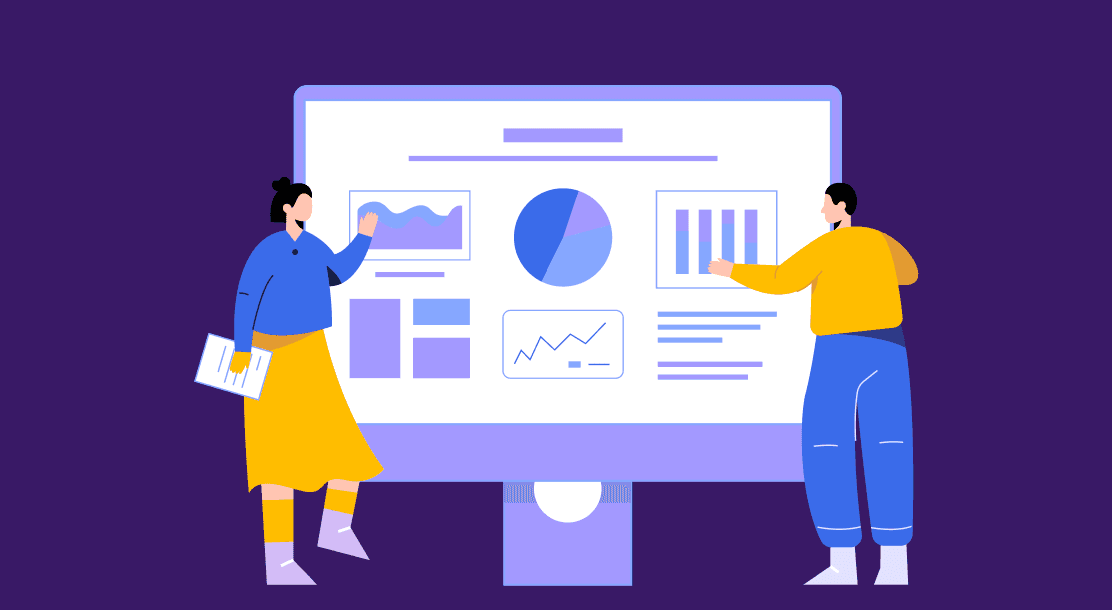
Data-driven design is all the buzz in the branding business, with more designers making informed decisions regarding data. Each designer can suggest instances where an idea sounded amazing on paper, but, when illustrated, did not wind up as they thought. To avoid circumstances like this, you should adopt data-driven design, i.e., it must allow organizations to comprehend how individuals utilize their products, and remove any chance of guesswork.
What Is Data-Driven Design?
In the simplest sense, data-driven design is any design that is supported by data and assists brands with understanding their target group better. Designers utilize data of different sorts to decide how to provide the best customer experience. There are some key metrics of client analysis, including consumer loyalty, lifetime engagement, segmentation, deals channels, social media, and acquisition understanding.
This information helps brands figure out the pain points of their clients and their recent shopping experiences. Many UX strategies consolidate data-driven plans, which have demonstrated unparalleled and tangible results in the past.
How Do You Collect Data?
There are two primary ways of collecting data. Let’s explore them below.
1. Qualitative method
Qualitative information is normally communicated through non-factual means, and it needs a clear structure at all times. A subjective methodology doesn’t utilize hard numbers and isn’t generally communicated in diagrams and graphs. This sort of information is significant for producing speculations and theories. Qualitative data can be acquired through client interviews, testing, and surveys, among other ways.
2. Quantitative method
Quantitative utilizes numbers and values to gain insights. Quantitative techniques are used to extract information that is more indisputable in nature. Web research, benchmarking, and A/B testing are some quantitative research strategies used in marketing.
Why Is Data-Driven Design Important?
Data-driven design is important, because it helps you with the following things.
1. Understand your users and their needs
In the IT services and product industry, there is a strong conviction that usability testing is pointless when an experienced UX designer is working on the project. Be that as it may, time after time, hiring an elite design service may not ensure the progress of a product. In many cases, designers alone can’t foresee what clients need and prefer.
Designers come from various backgrounds and may hold different viewpoints. They approach innovation distinctively and may have various assumptions. Luckily, they can overcome any barrier with data-backed inputs, particularly customer analysis and usability testing.
2. Create effective designs
Numerous associations battle to offset their clients’ necessities with their business targets. However, creating effective designs involves putting the customer’s needs first. Data-driven product design is made after gathering behavioral information from the audience. This data is crucial to creating designs that address users’ needs. Therefore, neglecting data analytics can have certain ramifications.
3. Leverage data to drive innovation
Many say that the data-driven approach to dealing with design restrains advancement. However, this may not be true. The issue isn’t utilizing data, but the way in which you’re utilizing it. Data is slowly becoming a pillar of innovation. Data can help you automate many processes, thereby boosting productivity. It can also streamline many stages of your production workflow.
5 Tips to Create Data-Driven Design
Key individuals must have access to data. Many times, a restricted data stream between different people in bigger associations can be a genuine roadblock to executing this new cycle. Designers, particularly, need access to quantitative information, particularly that which portrays client conduct. Here are a few tips to create data-driven product design effectively.
1. Lay down your goals clearly
Before you begin assembling the information, you should know what you need to achieve with it. Making your objectives as clear and conceivable as possible is crucial to executing this data-driven design approach. Additionally, ensure that your objectives are practical. Some significant variables that impact your choices are expense, time, and possibility. So before you jump into the world of data research, you should know what your priorities and resources are.
2. Understand your customers
There are a couple of approaches you could attempt. If you’re in the midst of making buyer personas, you can utilize data to understand your clients better. Check website analytics and infer behavioral flow to comprehend what they are doing on your page. You could analyze demographic information to get a more in-depth perspective on your clients.
3. Devise a theory
Once you know why you are gathering the information, you can try creating a theory. A theory is utilized in more scientific settings; however, similar standards apply when you make a UX design. A theory is a conditional explanation that proposes a potential clarification for some peculiarity or occasion. A valuable theory is a testable assertion, which can be applied to data as well.
4. Choose a strategy
As far as data is concerned, a strategy means putting your findings into action. In a way, it is a mixture of design thinking and data. A solid strategy should address business problems, and customers’ pain points with the help of the data acquired. Having a strategy may make it much simpler to integrate an additional information-driven plan process into your process.
5. Eliminate abnormalities
Often, a few bugs can disrupt the client experience, or an awkward user interface just gets to them. Perhaps they lose all sense of direction when browsing through your website. Or, on the other hand, is it an issue with correspondence, wherein the clients don’t get the kind of response they need from you.
Quantitative information will only get you so far. But if you want to dig further, you must utilize qualitative data. Reach out to your clients and understand things from their viewpoint. Assemble more information, utilize studies or client surveys, or get their feedback. Once you do this, you will see a notable change in responses to your design.
Key Takeaways
- A Data-driven design is tied in with understanding your online visitors and customers.
- It’s essential to concur with your team about why and how you intend to construct a design.
- One of the fascinating ways of estimating a design is by understanding how it makes your customers feel and what they relate with most.
- It’s vital to screen the impacts of your design changes and assess the public’s reaction to them.
- Always remember, regardless of the changes you make, there will always be a gap for you to address.
The best way to embrace data-driven design is to enable your stakeholders to realize its worth. Understanding the data-driven design cycle can give an edge to the designer, giving them more expert insights into the vocation. Client research, investigation, A/B testing, and other procedures empower a designer to make better plans effortlessly and data to back them up. Figuring out how to carry out these strategies could take some time, but it has many long-term merits.

FAQs
Data-driven product designs utilize UX research techniques, such as reviews, convenience testing, behavioral streams, and customer analytics, which assist you in designing a customer-centric product.
By depending on data, you stay away from any false assumptions about your users. Furthermore, you can notice a critical expansion in conversion rates.
A/B test permits product supervisors to show various things to two sets of individuals and gauge how they respond. You could run an A/B test for virtually anything, from a piece of copywriting and a picture to even a bunch of buttons.
Latest Blogs
Explore how Google’s 2025 AI search updates triggered ranking chaos. Learn actionable strategies to adapt your SEO for AI Overviews, zero-click searches, and SERP volatility. Stay ahead now.
Learn how to rank on AI search engines like ChatGPT, Perplexity, and Gemini by optimizing your content for authority, structure, and relevance. Stay ahead in AI-driven search with this strategic guide.
Explore the best healthcare SEO services for your medical practice. Improve online visibility and effectively reach more patients in need of your services.
Get your hands on the latest news!
Similar Posts

Design
7 mins read
15 Best Firms Offering Design Services in India

Design
6 mins read
Decoding Design Communities and Their Advantages

Design
5 mins read